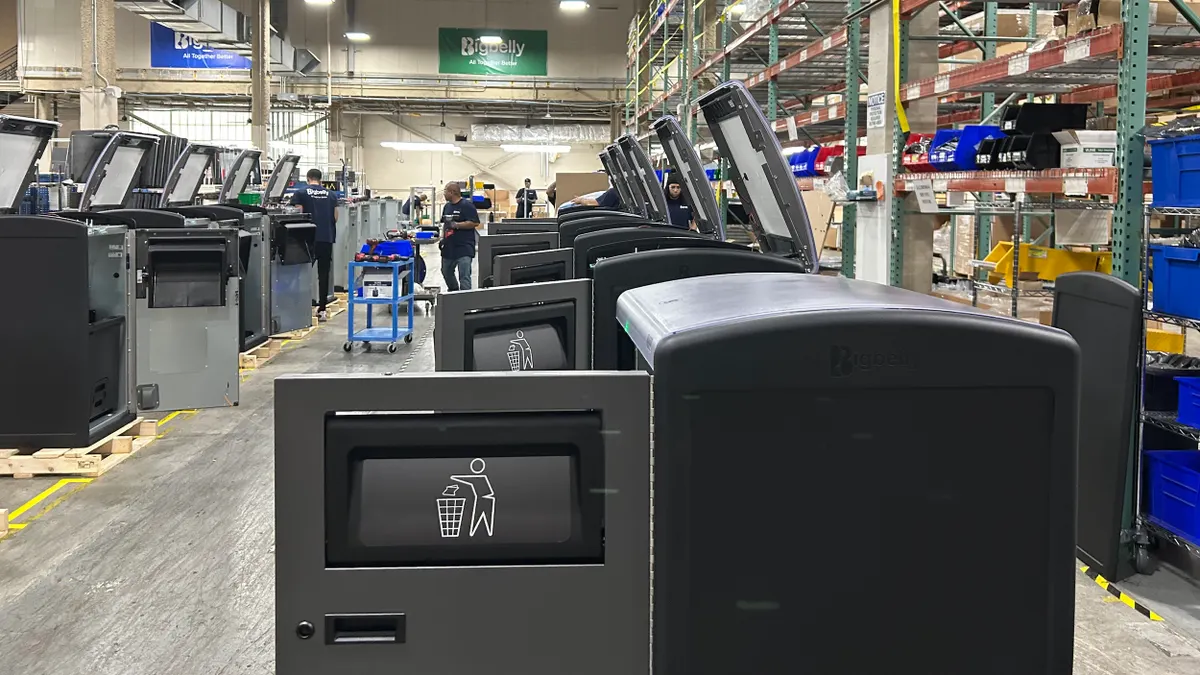With all the hype around new automation, like robots and improvements in optical sorting, why would anyone want to read an article about mechanical screening? You’re thinking, been there, done that, right? Well read on to find out.
The reality of sorting robots is a little different than what we see in fiction. Sorting robotics and optical sorters rely on repetition and feeding consistency. However, the material is anything but consistent in a MRF. The material flow coming into a MRF may be the most heterogeneous material known in a processing line.
Mechanical screening serves to even out and reduce the flow, increase downstream homogeneity and decrease burden depth. This allows manual, optical, or robotic sorters to function more efficiently and at higher throughput with the repeatability and consistency they need. Focusing on residential recycling this concept can be applied to other material types as well.
From a 10,000 foot perspective the end goal of a MRF is to create SORTED products. Sorting is a yes/no decision about every item that enters a MRF. That’s a lot of decisions. Precision is key so material needs to be spread out to better see items, which means limited throughput per sorting station.
Each decision costs money, so it is prudent to minimize “no” decisions. That is where screening comes in. Screening is a rough cut based on mechanical properties and because each item doesn’t have to be inspected the constraints with sortation go away.
Screening a robust process that has high throughput and is used to send the right material to the right sort station by fractionating and concentrating the material stream. This helps to not only increase sorter throughput but also sorter efficiency. This is why screening is here to stay.
There are many existing types of screens. The first and oldest way to screen is by size which is traditionally done by trommel, vibratory screen, or disc screen. The second way to screen is by shape, also known as 2D/3D separation. This can be done with disc screens and ballistic separators. Most of these types of screens are old as dirt going back to mining and agriculture, and have been used in the solid waste processing industry for decades.
Today, all the talk is about anti-wrapping machines. Recent developments in rotating disc screens have a high circumference shaft that significantly reduces wrapping. Material agitation is important to get all items to the screening surface and becomes more important as OCC quantity goes up and density goes down.
The latest development in screening uses a series of cantilevered rotating elliptical augers. These are high throughput, low-maintenance machines that cannot wrap because any material that gets hung up will eventually make its way off the end of the auger. They are also high throughput and don’t take up as much space as trommels or vibe screens.
Auger Screens have disrupted MRF process flows, and in the best way. When these machines are deployed at the start of a system the inbound material stream is fractionated in a way that moves smaller fraction to bypass the traditional presort, essentially eliminating the need for one. Now human sorters no longer have to see and sort through sharps, glass, and other dangerous items. Less human sorters are needed and have better visibility of the large fraction since the burden depth is significantly reduced.
The presort only exists to protect the machines that come after it and prevent downtime, cleaning, and maintenance. But this concept gets industrial automation backwards. Machines are supposed to help people work, not the other way around. The benefit of screening is seen dramatically in comparing the old style presort with a newer post sort after fractionating the inbound stream. The future of screening is primarily shifting toward screens that protect people, do not wrap, and do not require a presort.
Where do we go from here with mechanical screening? We need machines to deal with more difficult sort tasks. This can be done by maximizing sort efficiency with screening and minimizing the cost of doing so. And apply this to all sort tasks. Eliminating the presort is a big, necessary step along the way to the MRF of the future.
Learn more about fractionating.






